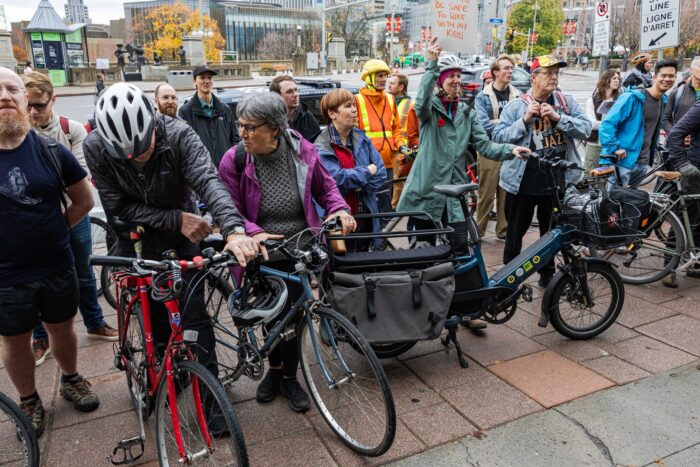From the government’s draft legislation and framework, Bill 212 would enable provincial approval for new bike lanes on municipal roads requiring removal of a traffic lane and for existing ones, where a traffic lane was removed.
It also provides for the removal of the bike lanes on Bloor St., Yonge St., and University Ave. in the City of Toronto and to return them to a lane of traffic.
The review of municipal submissions would lead to the decision of whether to maintain existing bike lanes or to require their removal and return lanes to motor vehicle traffic.
The proposed framework would also provide the province with the authority to require municipalities to submit information about existing bike lanes on municipal roads where an existing vehicle lane was removed. Based on the outcome of the review, a regulation could be made to require the removal of the bike lane and its return to a lane of traffic.
Even if cities did provide information about bike lanes, there is nothing to indicate that the Province will listen. They have already significantly cut the time available for debate and committee time to study the bill, according to TVO and The Canadian Press
The Bloor Street BIA has tracked data since the bike lanes were installed and found that the number of cyclists stopping to shop vastly outnumbers the cars, and both the number of visits and overall sales have increased. The number of store vacancies is unchanged, and there was no impact on emergency response times.
The hospitals along University Avenue supported installation of the bike lanes. CBC reports that the City of Toronto collected data over a 12 month period since the lanes were installed. It showed limited to no impacts on motor vehicle travel times and no issues for emergency services were reported. What is causing gridlock? Construction and cars blocking intersections.
According to City of Toronto definitions, these three roads are probably somewhere between collectors and minor arterials. Bloor Street carries between 18,000 and 23,000 cars per day. So at the top end (or even above what it should have). Meanwhile, the bike lanes on Bloor carry 8,000 people per day according to the BIA, at least in summer, and 50% of that in winter.
More generally, a lot of doctors and researchers at the University of Toronto are upset at the risks to people from Bill 212, which prioritizes travel times over safety. You can read the letter from 120 of them here.
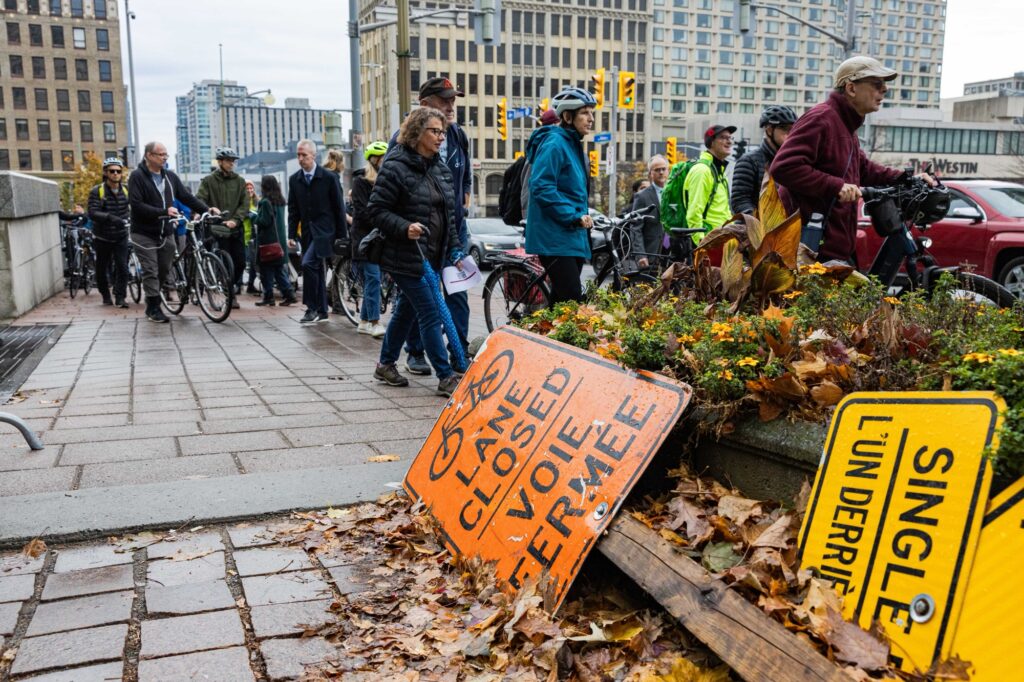
What does this mean for Ottawa? Among the high-profile projects, Laurier, Montreal Road and O’Connor bike lanes are at risk. Even halfway measures such as Beechwood’s mix of separated tracks and flexiposts could be taken out.
The City of Ottawa has already done quite a lot of research on the existing and planned bike lanes. We could argue that they have done too much research on the planning side, rather than getting on with the job and inducing demand towards active transit and away from space-guzzling car lanes.
That’s a lot of information, so here are some images and quotes from the protest on November 5th when Doug Ford was in town. We hope to be able to repeat those messages as witnesses to the committee studying the Bill.
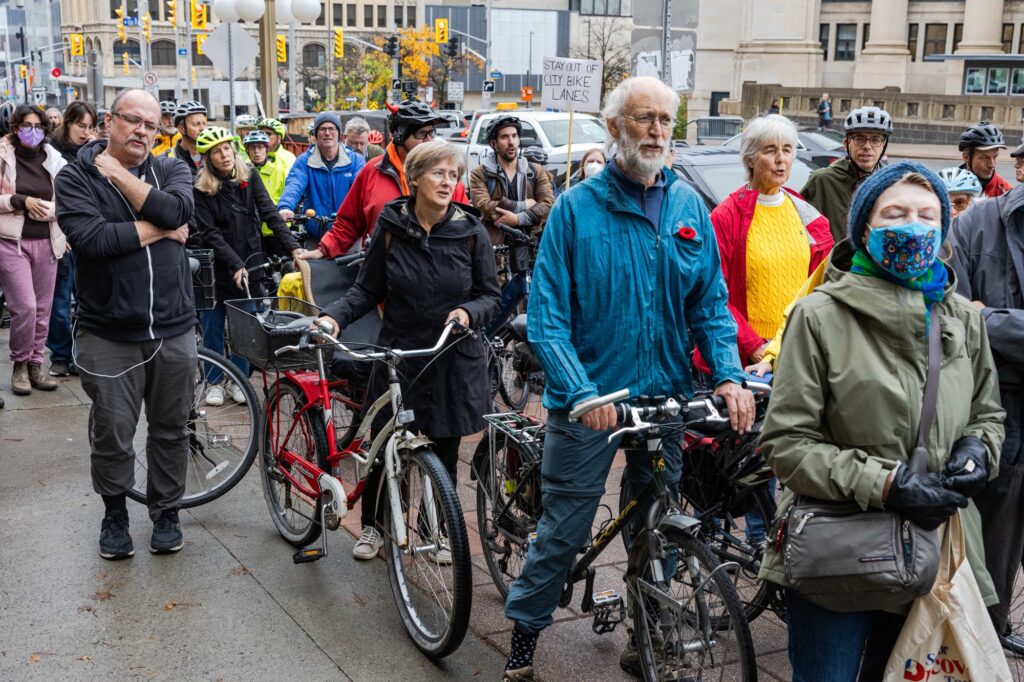
Ottawans of all ages and abilities want to bike. It’s a fun, efficient, affordable, healthy, and climate-friendly way to get around. We have moved beyond cycling as a niche activity for those who feel comfortable taking the lane with motor vehicles. We expect our city to be able to provide the current and planned cycling infrastructure that makes biking possible for everyone. (Cassie Smith, Vice President of Bike Ottawa)
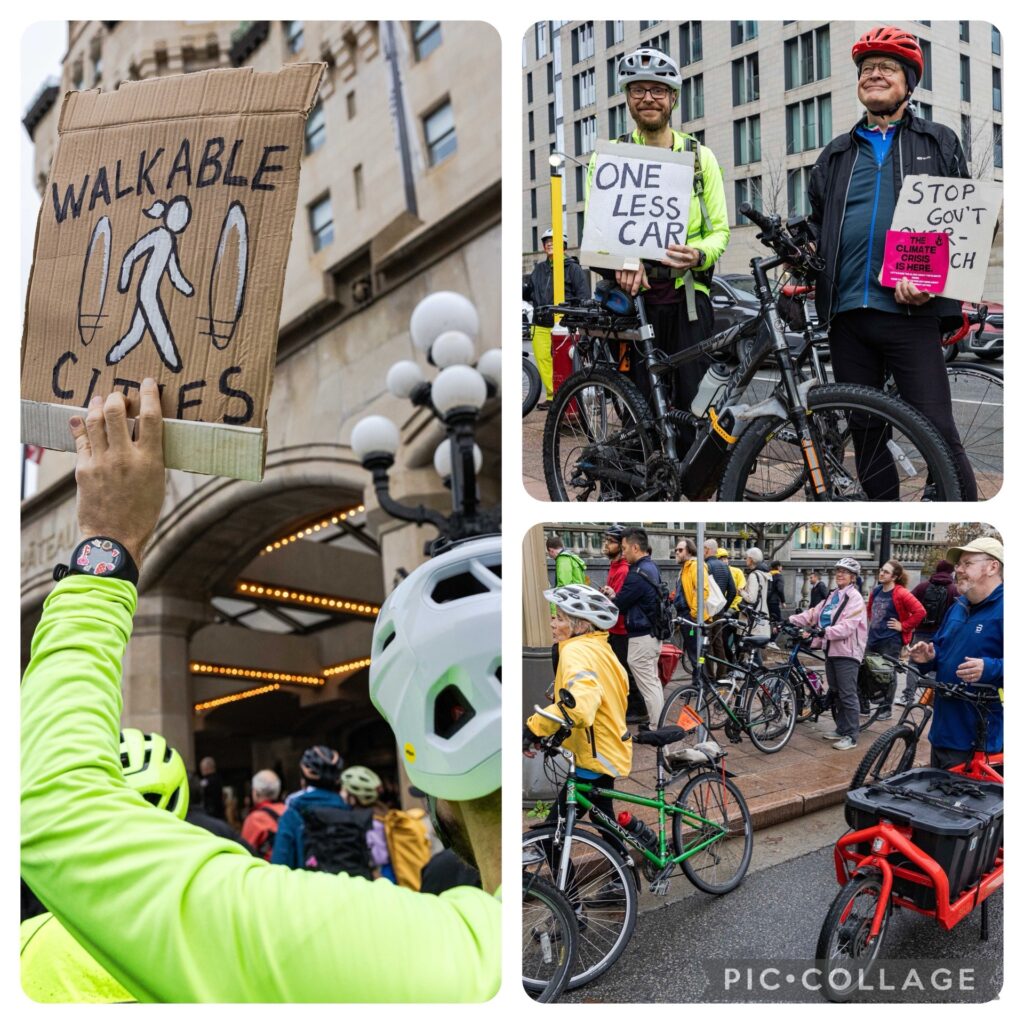
“We need more biking infrastructure, not less: bike lanes keep people safe, move people more efficiently, make our city more accessible to more people, and reduce our emissions. If Premier Ford really wanted to reduce gridlock, he’d not only add bike lanes, but help fund transit operations in Ottawa. This legislation has it backward and must be withdrawn.”(William van Geest, Interim Executive Director of Ecology Ottawa)
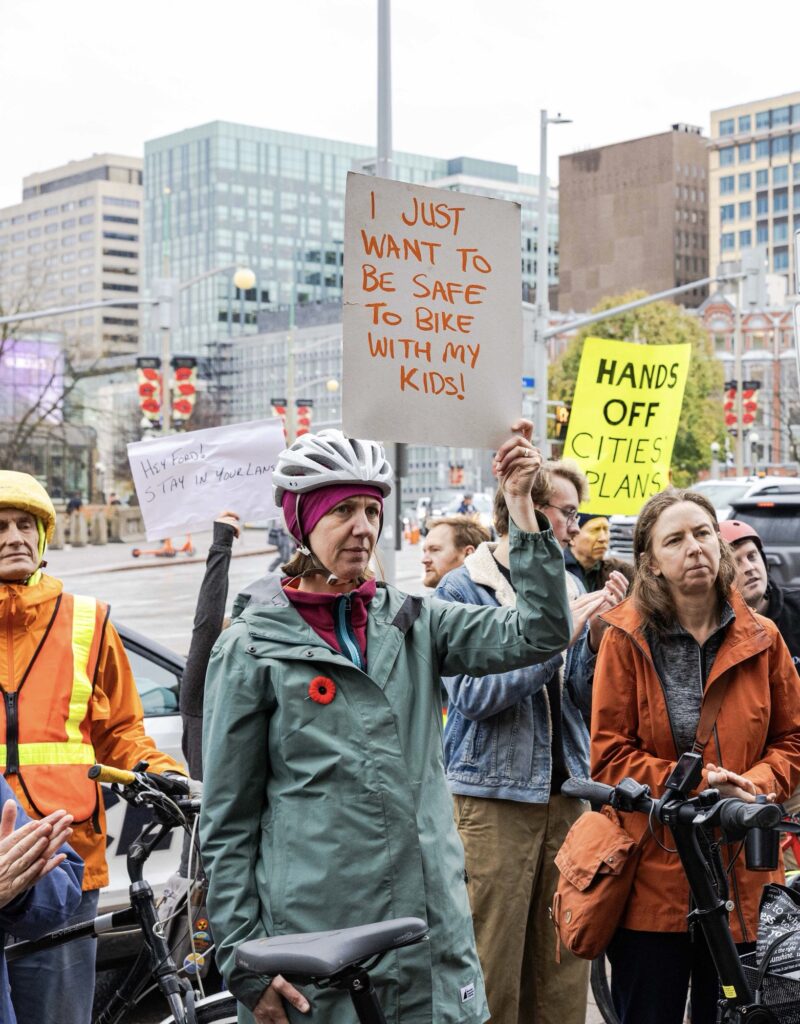
The safety of our residents should not hinge on whether someone in the comfort of a climate controlled vehicle gets to work 15 seconds later or not. Leave these decisions up to the professionals that the city has hired, the ones who are familiar with the local needs, rather than an MPP who has never been to any of these cities.” (Marko Milusevic, Ottawa resident)

